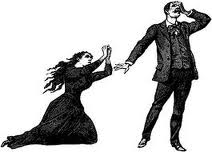I recall the first time I noticed how much people love over-acting. I’ve always loved theatre. I’ve been fortunate enough to act, direct, design, light, write and watch many theatrical performance. I remember this one time I was watching a theatre production of a Shakespeare play and one of the characters comes in to find his pal is dead. He wails and shouts and screams and ends up dead herself. I remember feeling a bit awkward about his performance. It was a bit too hammy for me.
Afterwards, I remember talking to some people about the production, and for interests sake, I brought up the two-dead-pals-scene because I was convinced that there was a distinct case of over-acting. Nope I was wrong. Everyone loved it. The emotional outpouring of grief, the bulging eyes, the spit across the stage, the waving hands. Then it dawned on me – audiences love to watch heightened versions of people.
So how does this relate to your presentation or pitch? Well, I think that audiences (for the sake of this blog, we’ll call anyone your pitching to an ‘audience’) find heightened versions of people irresistible and they love stories.
Now, I’m not saying that your pitch couldn’t be won through good content, an informative script, data and stats to back up your claims and a professional, if slightly miserable, air. What I am saying is that by bringing a heightened version of yourself, you stand yourself in better stead.
And not just yourself. You can also heighten versions of other people.
Consider this. Using the story of someone else’s experiences to convey the point you want to make. You can create or tell the perfect story of another human being to exactly meet the needs of what you want to pitch.
Simon Sinek is brilliant at this. If you watch his keynote about Leaders Eating Last, I think it’s about a 12 minute TED talk – he spends the first 2 or 3 minutes (nearly a quarter of the presentation), relaying a story about a soldier in Iraq. He goes into detail about the plane he was flying on, the time and date of the mission, the things that took place, the risks associated with this mission and the outcome.
He could have just got straight to the point, which was about great leaders being described by their subordinates as ‘would have done the same for us’, but he doesn’t. He tells us the story. He heightens our emotions by providing a heightened story and character that perfectly illustrates his point. Whether the soldier exists or not does not matter. Using this piece of theatre to draw in the audience conveys his point much better than stating the bare idea.
Watch the best presenters and performers. See how they illustrate each idea or point with a great story. Then you need to go back and look at what you are pitching. Do you have a great story to convey the idea? If not, find one. If it’s too mundane, heighten it. Raise the stakes. Think of us as an audience to be taken on a journey, and then your pitch will rock.
Have you ever used stories to heighten the quality of your pitch? Let me know in the comments below.



Leave a comment